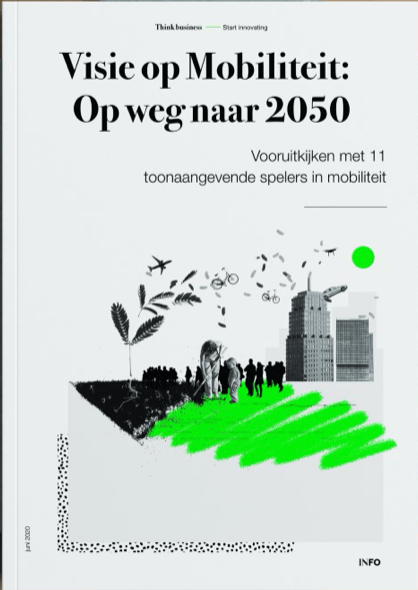Toon Zijlstra of the Knowledge Institute for Mobility Policy (KiM) gives his vision in the publication Vision on Mobility. Mobility is a comprehensive topic, not easy to oversee or predict. In order to work on the right solutions, it is important to understand how mobility will develop towards 2050. That is why INFO decided to ask eleven experts from market parties, the government and academics about their vision on future mobility. Today the publication of this report was presented to the press.
Towards 2050, about future mobility. It KiM is an independent scientific institute within the Ministry of Infrastructure and Water Management. They conduct research and provide insights to this ministry in the field of transport and traffic. Toon Zijlstra is a scientific researcher and mainly focuses on forecasting and questionnaires.
Zijlstra thinks that in the Netherlands we can be very proud of what we have. He also says that travel is getting easier, cheaper and more comfortable. According to him, traveling among young people has become a kind of status thing. Young people nowadays prefer to surf in Bali where they used to camp in the Ardennes. He says the crowds in traffic, at airports and on the train are causing climate problems and claims on fossil fuels, vulnerability to disruptions and road casualties. According to him, this is all devoted to modern (mobile) society. According to Zijlstra, this hypermobile society makes it possible to spread diseases such as corona. The corona crisis does make working from home easier than people had thought.
babyboomers
Zijlstra also thinks that the next phase of mobility will be headed by the baby boomers in the next five years. This group of people will reach an advanced age in the coming years, as a result of which many will no longer be able or allowed to drive a car. He is curious about what this will mean for our traffic and transport systems. This group of people will do their activities on foot, putting pedestrians at the heart of government visions and plans. He thinks climate is at the top of the agenda, so reducing emissions and climate adaptation. This, for example, by using electric vehicles and digitizing travel information and mobility services.
When asked how he thinks mobility will look in 30 years' time, he replies, I think there will be a sharper dichotomy between the I want it now- people and the I can pay for it- people and the fixed workplace / working time - people. According to him, this ad hoc mobility is a luxury that not everyone will be able to afford. He also expects more attention to travel time enrichment, travel time is not a necessary waste. He also thinks that all transport systems will be electric by 2050, the coarser transport systems such as trucks and airplanes will still be a challenge. He finds it difficult to oversee everything, because in his opinion mobility is completely intertwined with society, the environment, the economy and technology. Most pictures of the future mainly say something about the present; about those things that keep us busy now, "says Toon Zijlstra.
“We must move towards more social solutions and a restructuring of the economy and the logic behind it. We have completely adapted ourselves, our lifestyle, the economy and society to instant mobility. So a transition requires more than just replacing an internal combustion engine with an electric motor, ”he concludes.
Also read: Schiphol finally takes the Aalsmeerbaan back into use




